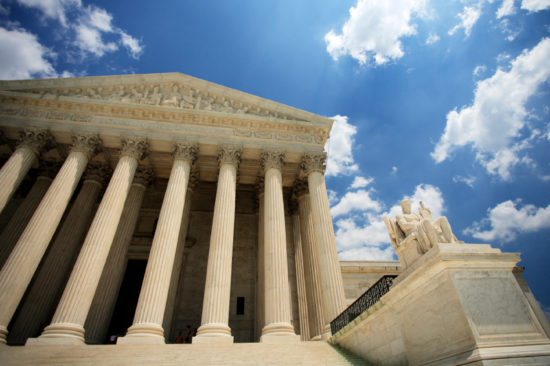Judge Kavanaugh, Dissenter in Chief

Judge Kavanaugh begs to differ. Or at least so it seems from the many cases in which he has dissented on the D.C. Circuit. These include a number of decisions issued by the entirety of the D.C. Circuit sitting en banc or denials of rehearing en banc. Hearings en banc are designed to reevaluate the determination of a panel of the court and are used on some circuits only in cases of outlier decisions. Kavanaugh, however, has dissented from the denial of rehearing of many, many cases in the D.C. Circuit.
Why should this dissenting character matter? First, it indicates just how conservative Kavanaugh is. The D.C. Circuit is not known as a particularly liberal court, but the vast majority of Kavanaugh’s dissents point in a more conservative direction than the principal opinions in those cases. Second, it suggests that, despite the fact Kavanaugh clerked for Justice Kennedy, his character as a judge may bear more resemblance to Justices Thomas or Scalia than Gorsuch or Chief Justice Roberts, who tend to push in the direction of consensus rather than insisting as much on the particular principles underlying the outcome.
With respect to these principles, Kavanaugh has articulated more thoroughgoing versions of originalism and textualism than Justice Kennedy ever espoused. In a recent symposium on Justice Scalia’s legacy, Kavanaugh embraced Scalia’s methods but identified two areas—one statutory and one constitutional—in which he believes problems still remain.
On the statutory front, he takes issue with the current way of interpreting laws. Debates about whether legislative history should be used in statutory interpretation have raged within the past decades. Many judges now look to whether a statute is ambiguous and then may use legislative history to clarify that ambiguity. Kavanaugh thinks courts should do away with the determination of whether statutory language is ambiguous or not and that documents indicating what the legislature meant should be used only as a last resort, to avoid absurdity. Instead, he believes, judges should arrive at a “best reading” of the statute through looking at the words in question, the context of the statute, and canons of construction.

This has practical consequences, and not ones that reduce the role of the judge to an “umpire,” as Kavanaugh follows Chief Justice Roberts in endorsing. For example, in the 2012 case of Coalition for Responsible Regulation, Inc. v. EPA, the D.C. Circuit was faced with the question of whether the Environmental Protection Agency’s interpretation of “any air pollutant” to include greenhouse gasses in part of the Clean Air Act was justifiable. The Supreme Court had already interpreted reference to “air pollutant” in another section of the Clean Air Act as including “all airborne compounds of whatever stripe” in Massachusetts v. EPA (2007). Nevertheless, Kavanaugh insisted in his dissent from the denial of rehearing en banc that “any air pollutant” meant something more limited in this different section of the statute. In doing so, he did not look to legislative history or intent but instead interpreted the provision in the context of other parts of the statute. Hence his technique of interpretation allowed him to circumvent the plain meaning of the statute without reference to any empirical evidence of what Congress wanted.
On the constitutional level, Kavanaugh expressed concern about when to find “exceptions” to constitutional rights. This in and of itself is an odd way of phrasing the question, although he tells his audience not to be hung up on the terminology. In general, all constitutional provisions have been weighed in relation to the strength of the state interest opposing them. Under the New Deal, the Court began to develop three levels of scrutiny: rationality review, requiring a rational basis for government legislation and a non-arbitrary relation between means and ends, in cases of economic regulation; strict scrutiny, requiring a compelling government interest and means narrowly tailored to effectuate that interest, in cases involving classifications based on race; and, somewhat more recent, intermediate scrutiny for gender-based classifications. Kavanaugh objects to all of these as ungrounded, although he admits he is not sure of the best alternative.
In this one respect, Kavanaugh might carry on Justice Kennedy’s legacy. In a number of recent cases—and to Justice Scalia’s displeasure—Justice Kennedy employed an imprecise kind of scrutiny in assessing the validity of legislation such as laws against same-sex sodomy or prohibiting gay marriage. That is not to say Kavanaugh would protect these decisions, but that he too might move in the direction of getting rid of the levels of scrutiny altogether as judicially created rules not justified by the Constitution. This could ultimately have far-reaching implications, allowing the Court to intervene more in areas of economic regulation.
A final stylistic trait may have some bearing on the confirmation process for Judge Kavanaugh. In cases involving politically controversial issues, he tends to acknowledge the views of both sides while stating something to the effect that these political considerations can’t weigh into his decision and he is instead bound by Supreme Court precedent. I have already seen people posting a passage in which he explains the views of those who support a right to abortion as a sign of his evenhandedness. Kavanaugh’s rhetorical strategy should not mask the weight of the decisions at which he ultimately arrives, however. Although disclaiming a reliance on political principles, he almost always comes out in favor of a conservative result. Hence, in Garza v. Hargan (2017), involving access to abortion for minors in immigration detention, Kavanaugh characterized the majority’s determination that barring a minor from obtaining an abortion until the government had found her an immigration sponsor imposed an undue burden as creating a “new right” for “abortion on demand.” This determination disregarded the fact that minors in the United States generally can obtain abortions regardless of parental consent if a judge grants them a judicial bypass and that the Supreme Court has held that such a judicial bypass option to parental consent is constitutionally required.
Of course, as a Supreme Court Justice, Judge Kavanaugh may feel freer to take policy considerations into account. My suspicion, however, is that his decisions will remain focused on interpreting the law, whether statutory or constitutional, but that his readings of law will depart from what many of us would think is the plain meaning and what recent majorities of the Supreme Court have similarly concluded. And it remains to be seen how his dissenting character will translate to a Supreme Court with a clear conservative majority.
Bernadette Meyler, JD ’03, Carl and Sheila Spaeth Professor of Law, is a scholar of British and American constitutional law and of law and the humanities.
